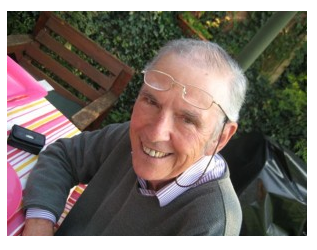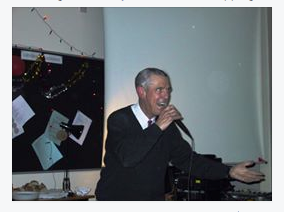Date of ‘MSc’: ‘1979/1980’.
MSc Project Title:
None.
Pre-‘MSc’ Background:
BA Modern Languages, Cambridge (1959); manager Shell Oil International, Africa and Vietnam (9 years); BSc Psychology, Hull (1970); PhD, Cambridge (1974), then researcher, MRC/Applied Psychology Unit (9 years); Reader then Professor UCL (21 years).
Pre-‘MSc’ View of HCI/Cognitive Ergonomics:
I studied for my PhD and worked at the MRC/APU Cambridge under Donald Broadbent. I began research into HCI with colleagues in the early 1970s in collaboration with IBM. Unsurprisingly, I viewed HCI essentially as Applied Psychology. Psychology theories of HCI can be developed and then applied to solving design problems. We researchers developed the theories; practitioners were intended to solve the problems with the knowledge we acquired.
Post-‘MSc’ View of HCI/Cognitive Ergonomics:
No real change from that of before ‘MSc’. HCI is still viewed as Applied Psychology. If design problems include a physical aspect (for example fatigue or posture) Physiology and Biomechanics theories can be applied in addition to those of Psychology. The ‘new’ Cognitive Ergonomics, then, complements the ‘old’ Physical Ergonomics.
Subsequent-to-‘MSc’ View of HCI/Cognitive Ergonomics since:
My view has changed radically, during this period. I employed a number of (outstanding) engineers at this time to join me in the conduct of HCI research – John Dowell; Kee Yong Lim; Ian Salter; and Adam Stork, most of whom were MSc then PhD students. Separately and together, they forced me to make the following changes to my Applied Science view of HCI: 1. HCI Science is the understanding, that is, explanation and prediction, of HCI natural phenomena. 2. HCI Engineering is the design for performance, that is design problem diagnosis and prescription, of artefacts (see Hill (2010) and Salter (2010)). 3. Scientific theories, such as models and methods, can contribute to Engineering practice; but they need to be (re-)formulated for design purposes and validated by Engineering practice (see Denley and Long, 2010). Since the middle 80s, I have been teaching, researching and practising HCI, using an engineering approach, including the search for HCI Engineering Principles.
Additional Reflections
Directing the EU was the best job I ever had (and I have had some very good jobs).It was a great place to work (hard) and to play (hard); but very much in that order. The EU attracted some very brilliant students and staff. I sometimes wondered, who was supervising whom. I still claim that I never did any of them (permanent) mental damage. I remain grateful to them and their contributions to a very special place to work. ‘Task Quality’ was very high and so as ‘Desired’, although it has to be said that ‘User Costs’ were even higher and only just about ‘Acceptable’. I still count many as my friends and we continue to meet up yearly to remember the ‘good old EU’ and to celebrate our luck and good fortune to have been part of it.
Making our own fun at an EU party…..
JL ‘rapping’ – Ho! Ho! Ho!
Couldn’t (w)rap a cod and chips, ready to go.


